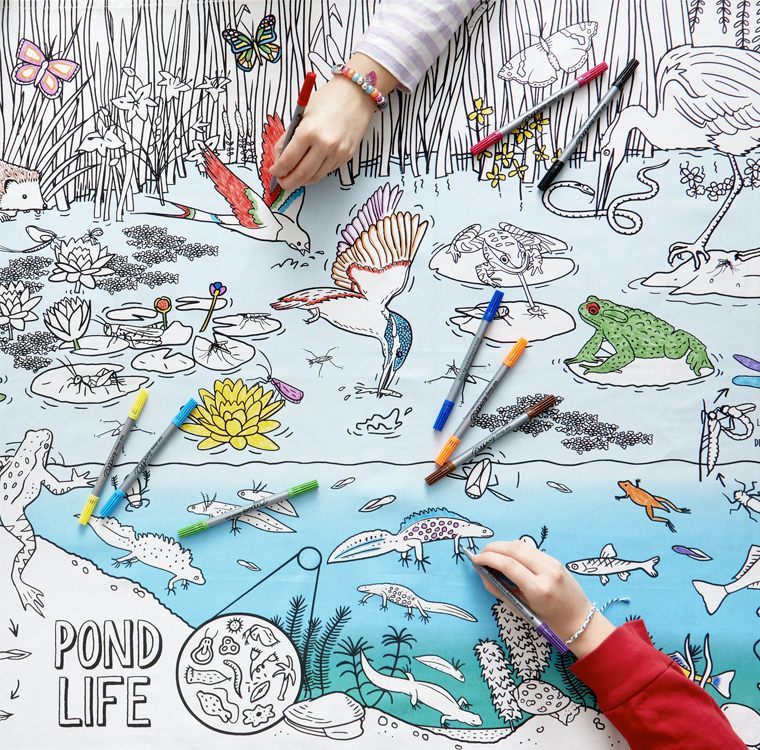Bees are buzzing, flowers are blooming, and the sun is shining: spring is here!
We’ve teamed up with Wiltshire creative company eatsleepdoodle who are celebrating our springtime burst of wonderful wildlife waiting to be spotted. From butterflies to badgers, wild garlic to woodpeckers, there are so many things to look out for!
Butterfly watch
What wildlife can you spot this time of year? Well, we’ve been in touch with Butterfly Conservation, and they have kindly given us a picture guide as to what butterflies and moths you can expect to see in April and May.
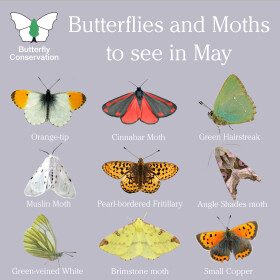
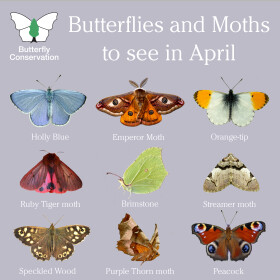
Some have even appeared early this year! You’ll see on Butterfly Conservation’s Instagram account, that an Orange-tip (anthocharis cardamines) was spotted in Kent at the beginning of March!
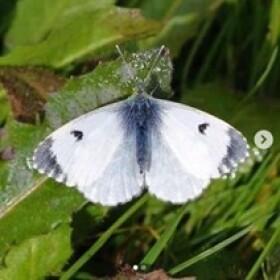
Orange-tip butterfly photograph by Tim Bates and Joanne Fegan
A common butterfly to see all across Britain, according to the Butterfly Conservation’s research, is the Common Blue (part of the Blues family and similar to the Adonis Blue!). They enjoy sunny, sheltered areas, and some of the most common places to find a Common Blue include grass and woodland clearings, road verges and coastal dunes. The male butterflies are the most colourful; bright with a beautiful light blue upper-wing; whereas the females are more muted and usually have larger areas of brown.
Another common butterfly in Britain is the Peacock. The underside of their wings is camouflaged to be hidden amongst leaves, but their upper-wing has beautiful bright colours, which help confuse and startle any predators. They can be found across the British Isles and are most often found in gardens!
Also keep an eye out for the Large White, the winner of the 2020 Big Butterfly Count, these lovely butterflies enjoy a variety of habitats, but can usually be seen in gardens and allotments.
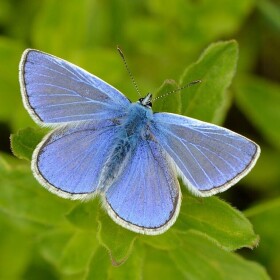
Common Blue
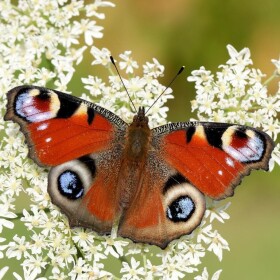
Peacock
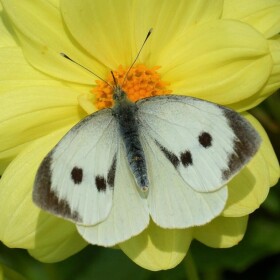
Large White
Butterfly Conservation
Butterfly Conservation is a wonderful organisation, aiming to recover threatened species of moths and butterflies, increase numbers of widespread species, promote international conservation actions, and inspire people to understand and take part in conservation.
Last year’s Big Butterfly Count saw the ‘lowest numbers recorded in 11 years’. The average number of butterflies logged by Butterfly Conservation in 2020 was down by 34% in comparison to 2019. However, last year a record number of people contributed to the count, ‘it seems that, in a very dark and challenging year, the opportunity for getting out into nature and helping as citizen scientists were very welcome to people who were able to participate in the Count this year. Butterfly Conservation is thrilled the event was enjoyed by so many people.’
Other wildlife
It’s not just butterflies that Spring brings, soon we’ll see new life popping up everywhere! Badger cubs begin to emerge, mallard ducklings start their adventures and frogspawn can be spotted in ponds across the UK. The dawn chorus will get louder and more persistent as the fledglings take flight and more birds are looking to mate.
Spring birds are ready to be found in gardens and woodland across the UK. Cuckoos are calling, woodpeckers are hard at work (carving a nest hole in a tree trunk!) and blue tits can frequently be seen hopping around the garden in search of snacks.
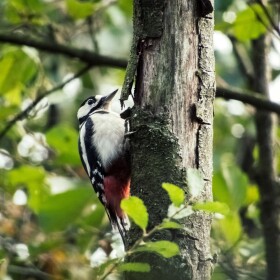
Woodpecker – photo by Strong Fish
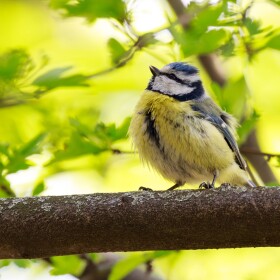
Blue Tit – photo by dfkt
The RSPB have a great article about common garden birds to look out for here – this can also help identify the birds you are seeing in your garden in the coming Spring months.
As well as birds and butterflies, other small wildlife venture out in the Spring, like hedgehogs! Did you know that hedgehogs roam an average of one mile each night looking for food? That’s a long way on little legs! Waking up from their hibernation, hedgehogs love gardens as they provide the perfect habitat.
How can you help wildlife?
Gardens provide them with plenty of food and potential nesting sites. Hedgehogs like to eat creepy crawlies, however, during dry periods these can become sparse. You can create a small home and supplement food for hedgehogs in your garden. A shallow dish of water will benefit them hugely and even meat-based dog or cat food can be left out for them. Springwatch suggests that logs, leaves, twigs and natural garden compost make an ideal home for these small creatures (and bumblebees too), if you keep a pile in your garden – visitors may start to appear!
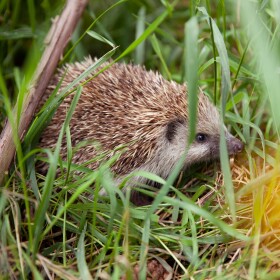
Hedgehog photo by Alicja Gancarz
Another way you can encourage wildlife at home is by letting your lawn grow and trying to establish a flower-rich lawn. This is a great way to encourage bees. Something as simple as leaving a strip of long grass or planting wildflower seeds or nectar plants can help bees, and butterflies too! Recently, we’ve noticed a lot more places such as churchyards and village greens-leaving large sections of grass or lawns uncut as a safe place for bees and other small wildlife.
Don’t forget that if you see a bee struggling, you can gently pick it up (we recommend using a piece of paper!) and give them a few small drops of water with sugar or honey – this should give them a boost! Another great idea is a bee house – this is a collection of small (usually wooden) tubes that bees can use to lay their eggs in.
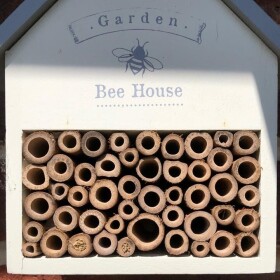
Plants & flowers
Spring sees a whole new world of colour from gorgeous plants and flowers! The start of Spring is when we see beautiful blossom and daffodils begin to flower, both of which create an instant atmosphere as they open up quickly in the sun.
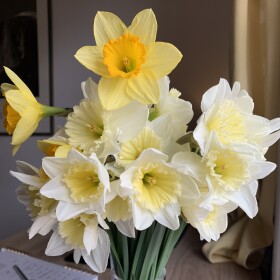
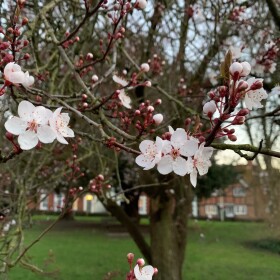
Whilst these bold blooms begin the month of March, towards April we begin to see the bright hues of bluebells and smell the strong aroma of wild garlic (yum!). Head to any wooded area for your bluebell fix. Bluebells fill the forest floor with a cool blue tone, an added pop of colour to the regular muted tones. Did you know that over half of the world’s population of the iconic bluebells are grown in the UK? Bees love them and we have ants to thank for helping spreading their seeds!
Wild garlic is not only charming but delicious as well! Spending most of the time as a bulb underground, wild garlic then emerges with gorgeous white flowers that explode onto the green leaves during April and May with an amazing firework-like flower. It is the perfect plant for pollinating insects such as butterflies and hoverflies. You can also make your own pesto with wild garlic – scrumptious!!

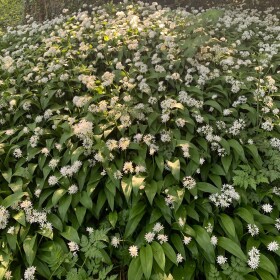
What are you most looking forward to this spring? We’re excited to see some brighter days ahead and being able to take in the magical spring delights. And we’ll be making full use of our pond life tablecloth and tote bag and butterfly collection to keep track of what wildlife we can spot this year! With bird seed, butterfly references and a pesto recipe at hand, off we go into another enchanting springtime!
Win a Pond Life Tablecloth
We’ve teamed up with Wiltshire’s eatsleepdoodle to encourage you to notice the wildlife all around you and give you the chance to win a Pond Life Colour and Learn tablecloth. To enter to win, all you have to do is follow eatsleepdoodle on social media and tag eatsleepdoodle & Round & About in your wildlife pics on Instagram before Easter Monday (5th April). We can’t wait to see your creations!
Usual Round & About competition T&C’s apply.
So get outdoors and enjoy the nature around you this Spring!
Tell us your local stories here








